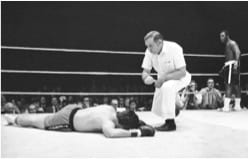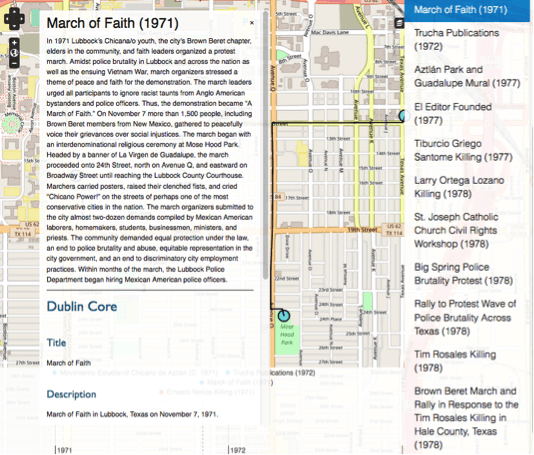Kyle B. Carpenter is a PhD Candidate in SMU’s William P. Clements Department of History
I study European-born immigrants who traveled to Rio Grande Borderlands in the mid-nineteenth century. This past month, I sat down with the records of United States consular dispatches from Matamoros, Mexico to see if the consulate recorded any intersections with Europeans in the region. While I found a few choice documents for my own research, I came across a lot of interesting material within the consular dispatches that I wanted to get out there in case any other historians are interested in the topic. What I have noticed, at least in the context of Matamoros between 1826 and 1867, is that consuls individually and the consulate in general often acted as agents for U.S. imperial ambitions. They denigrated the local Mexican population and Mexican government, imposed upon Mexican law outside of necessary U.S. interests, and regularly called for U.S. forces to intervene in Mexican territory.
The United States consulate system was designed to protect American seaman from injustices imposed by foreign powers as well as extend commerce and preserve trade for U.S. mercantile interests. Even though the consuls in Matamoros executed that agenda, they tended to partake in a few extracurricular activities to push the United States to extend beyond its territorial boundaries. For example, Daniel W. Smith represented the United States as consul in Matamoros and remained one of the longest standing consuls in that port discharging those responsibilities from 1826 to 1842, which was no small feat in the age of executive patronage. In 1829, he crafted a report to then Secretary of State Martin Van Buren complaining about Mexican officials practicing extra judicial policies in which he concluded that, “The most intelligent natives of this country manifest an anxious solicitude that something decisive may be effected in relation to our commercial intercourse. They have been often heard to remark…that under the Administration of General Jackson it would be sooner and better adjusted.”[1] This statement offers a wealth of detail to unpack. First, by the term “natives,” Smith was describing Mexicans. However, by using that careful choice of words he takes away their ownership of the land and associates Mexicans with Native Americans, who Jackson was at the time forcing to remove from their Eastern lands. Smith’s statement also implies that the Mexican government was incapable ensuring profitable trade and the best of the Mexican population would prefer to live under Jackson’s administration. Smith would continue to suggest that the Mexican government was incapable of protecting commerce and that the whole region would greatly benefit from more sound government, like that of the United States.[2]
Even after the United States’ successful conquest of the Southwest in the U.S.-Mexico War, consuls continued to push for expanding U.S. power beyond the border. Thomas Slemons, U.S. consul in Matamoros in 1848, declared that the United States should waste no time claiming sovereignty over the entire Rio Grande so that “it opens to our commerce and agriculture a valley almost equal to that of the Mississippi.”[3] Further, he notes that the continued development of American towns along the river would ensure that the United States would control the commerce of all of Northern Mexico.
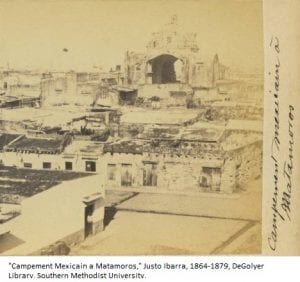
Slemons’s soft colonialism turned into overt calls for the use of more military force by the time Richard Fitzpatrick took over the consulate. In 1860, Fitzpatrick witnessed the peak of the Cortina raids north of the Rio Grande and the outbreak of a violent civil conflict within Matamoros and could not withhold his vitriol for Mexico.[4] Penning a letter to Secretary of State Lewis Cass, the fiery consul claimed, “These people are and always have been deadly hostile to every American (unless he is a negro or mulatto)…It is an entire mistake if our government believes that the people of this country are or ever will be friendly to Americans…if our government intends to protect the lives and property of our citizens it must be done by force, for it cannot be done by treaty stipulations.”[5] In this letter, consul Fitzpatrick clearly implies that the United States needs to invade Matamoros because he believes Mexicans to be an inferior people who have no regard for their American superiors. By demanding violent interference, Fitzpatrick hoped for military occupation and possibly further conquest below the Rio Grande.[6]
The above mark just a few examples I found in the consular dispatches of one port in Northern Mexico and even there I have barely scratched the surface. The historiography on the United States consulate system remains quite sparse, at least in my cursory review of it. Considering that it has officially been in existence since 1792 and created abundant sources that are well organized and easily accessed, the consulate system marks a gaping hole in American historiography. Gautham Rao’s history of the U.S. custom houses could even provide an excellent model for how to tackle such a large bureaucracy.[7] I think it’s a worthwhile and significant topic, not to mention the documents are quite entertaining to read.
[1] Daniel W. Smith to Martin Van Buren, July 01, 1829, “Despatches from United States Consuls in Matamoros, Mexico, 1826-1906,” Microfilm Mf79.01, reel 1, DeGolyer Library, Southern Methodist University.
[2] Daniel W. Smith to Louis McLane, January 01, 1834 & Daniel W. Smith to John Forsyth, January 01, 1835, Ibid.
[3] Thomas Slemons to James Buchanan, November 12, 1848, , “Despatches from United States Consuls in Matamoros, Mexico, 1826-1906,” Microfilm Mf79.01, reel 3, DeGolyer Library, Southern Methodist University.
[4] For more on these conflicts see Jerry Thompson’s book Cortina: Defending the Mexican Name in Texas, (College Station: Texas A&M University Press, 2007).
[5] Richard Fitzpatrick to Lewis Cass, January 06, 1860, “Despatches from United States Consuls in Matamoros, Mexico, 1826-1906,” Microfilm Mf79.01, reel 4, DeGolyer Library, Southern Methodist University.
[6] An added note: Fitzpatrick was from South Carolina and quit his post as U.S. consul in November to join the Confederacy.
[7] Gautham Rao, National Duties: Custom Houses and the Making of the American State (Chicago: University of Chicago Press, 2016).



 If borders in general and the U.S.-Mexico border specifically are relatively new historical developments, walls are most certainly not. If anything, they have seemingly existed since time immemorial, with Hadrian’s Wall, the Great Wall of China, and the Berlin Wall all attesting to the long-held belief in separating one area from another. Vestiges of these walls still exist, along with a simple question: did they work? In some ways, the answer is obvious. By their very nature, walls provide a physical barrier between two places, making it difficult for people who wish to cross, legally or otherwise. Moreover, walls, and–as is often the case now–fences, usually have very real and often violent consequences. Take, for example, the Berlin Wall, where between 86 and 262 people died and another 75,000 were arrested, serving prison sentences for up to eight years for “deserting the public.”
If borders in general and the U.S.-Mexico border specifically are relatively new historical developments, walls are most certainly not. If anything, they have seemingly existed since time immemorial, with Hadrian’s Wall, the Great Wall of China, and the Berlin Wall all attesting to the long-held belief in separating one area from another. Vestiges of these walls still exist, along with a simple question: did they work? In some ways, the answer is obvious. By their very nature, walls provide a physical barrier between two places, making it difficult for people who wish to cross, legally or otherwise. Moreover, walls, and–as is often the case now–fences, usually have very real and often violent consequences. Take, for example, the Berlin Wall, where between 86 and 262 people died and another 75,000 were arrested, serving prison sentences for up to eight years for “deserting the public.”
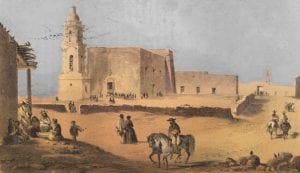 Even before my arrival to Texas, I have always been interested in the history of the Spanish frontiers in North America, particularly the institution of the frontier mission. But studying the missions implied learning about the Franciscan missionaries as well as the missionized. While I encountered a good amount of works that focus on the latter when I started my project, I also found that we knew little on the missionaries, particularly their lives before they reached the frontiers of the Spanish empire. Where did Franciscans come from? What did they learn and how? How were their daily lives? Did they have other evangelical experiences? What type of Catholicism(s) did they practice and taught?
Even before my arrival to Texas, I have always been interested in the history of the Spanish frontiers in North America, particularly the institution of the frontier mission. But studying the missions implied learning about the Franciscan missionaries as well as the missionized. While I encountered a good amount of works that focus on the latter when I started my project, I also found that we knew little on the missionaries, particularly their lives before they reached the frontiers of the Spanish empire. Where did Franciscans come from? What did they learn and how? How were their daily lives? Did they have other evangelical experiences? What type of Catholicism(s) did they practice and taught?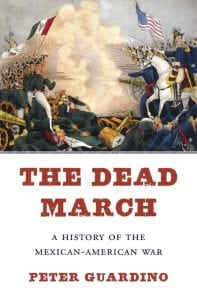 Throughout the book, Guardino builds a sustained and compelling case against a myth that has long haunted interpretations of the Mexican-American War in both countries. This myth suggests that Mexico lost the war primarily because it lacked the stability and national unity of its northern neighbor. Guardino, on the other hand, shows that the war’s outcome had far more to do with the economic and social disparities between the two countries. An assortment of geographical, political, and social forces combined to give the U.S. a strong material advantage. At the same time, costly mobilization efforts, a violent U.S. occupation, and the U.S. Navy’s blockade of Mexican ports compounded Mexico’s already dire economic situation and aggravated its internal conflicts. The loss of revenue from import duties crippled the financially strapped Mexican state, while the war’s demands further burdened a society already living on an economic knife-edge. Given this harsh reality, Guardino shows that the fierce and sustained resistance that Mexicans made against the U.S. invasion was nothing short of remarkable. Working to overcome deep internal divisions and constantly weighing the stark realities of personal and family survival, Mexicans from all walks of life contributed to and participated in the war effort. In doing so, they unequivocally declared and demonstrated their Mexican nationalism. “In short,” Guardino concludes, “Mexico lost the war because it was poor, not because it was not a nation” (367).
Throughout the book, Guardino builds a sustained and compelling case against a myth that has long haunted interpretations of the Mexican-American War in both countries. This myth suggests that Mexico lost the war primarily because it lacked the stability and national unity of its northern neighbor. Guardino, on the other hand, shows that the war’s outcome had far more to do with the economic and social disparities between the two countries. An assortment of geographical, political, and social forces combined to give the U.S. a strong material advantage. At the same time, costly mobilization efforts, a violent U.S. occupation, and the U.S. Navy’s blockade of Mexican ports compounded Mexico’s already dire economic situation and aggravated its internal conflicts. The loss of revenue from import duties crippled the financially strapped Mexican state, while the war’s demands further burdened a society already living on an economic knife-edge. Given this harsh reality, Guardino shows that the fierce and sustained resistance that Mexicans made against the U.S. invasion was nothing short of remarkable. Working to overcome deep internal divisions and constantly weighing the stark realities of personal and family survival, Mexicans from all walks of life contributed to and participated in the war effort. In doing so, they unequivocally declared and demonstrated their Mexican nationalism. “In short,” Guardino concludes, “Mexico lost the war because it was poor, not because it was not a nation” (367).

